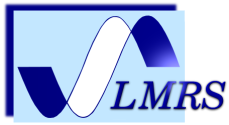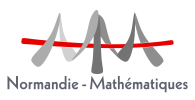 Français
Français English
English
GdTProbaTESD20191125
Double and joint coboundaries of irrational circle rotations
Salle de séminaire M.0.1.
(Ben-Gurion University, Israel)
Let $T$ and $S$ be contractions on a Banach space $X$. Elements of $(I-T)X$
are called coboundaries of $T$; the elements of $(I-T)X \cap (I-S)X$ are called
joint coboundaries of $T$ and $S$. If $T$ and $S$ commute, then obviously
the elements of $(I-T)(I-S)X$, called double coboundaries, are joint coboundaries.
It is natural to ask if there exist joint coboundaries which are not double coboundaries.
We prove that if $T_\alpha$ and $T_\beta$ are induced on $L_p(\mathbb T)$ or $C(\mathbb T)$
by two irrational rotations, $\alpha$ and $\beta$, of the unit circle $\mathbb T$,
then there are joint coboundaries which are not double coboundaries.
Moreover, we prove that there are continuous functions $\psi,f,g \in C(\mathbb T)$ such that
$(I-T_\alpha)f=\psi=(I-T_\beta)g$ (i.e. $\psi$ is a joint $C(\mathbb T)$ coboundary), but
there is NO measurable $h$ satisfying $(I-T_\alpha)(I-T_\beta)h =\psi$.
For non-commuting transformations, the problem of existence of joint coboundaries
was studied by T. Adams and J. Rosenblatt.
(Joint work with Guy Cohen)




